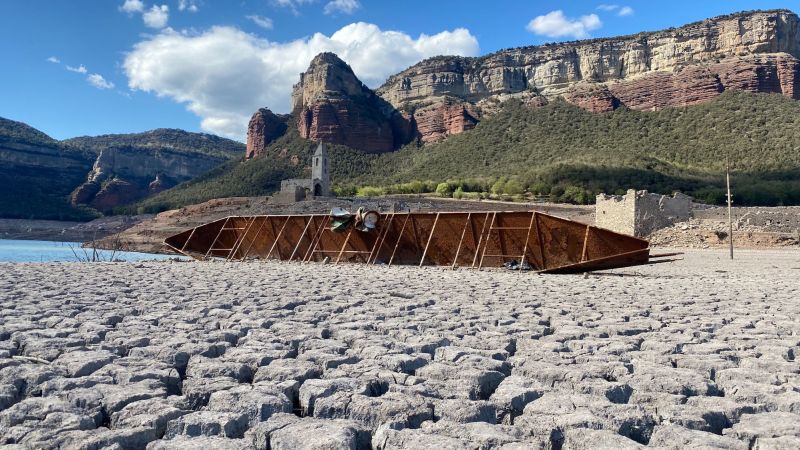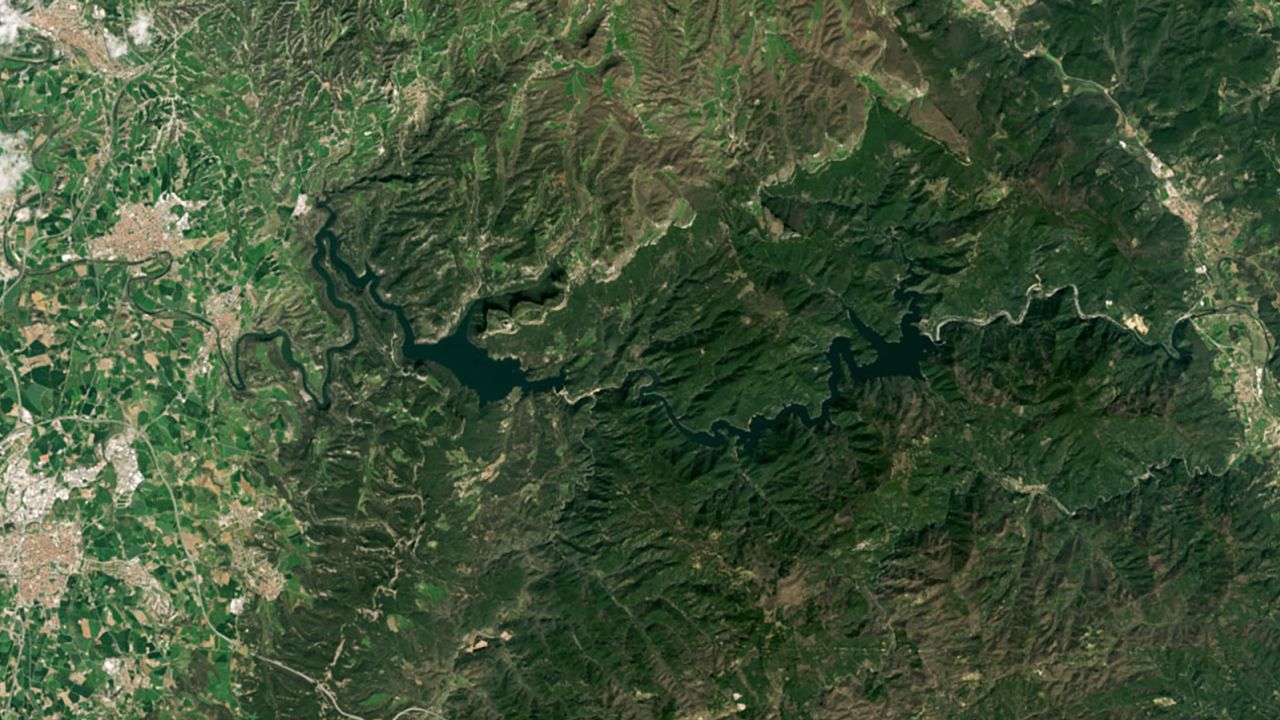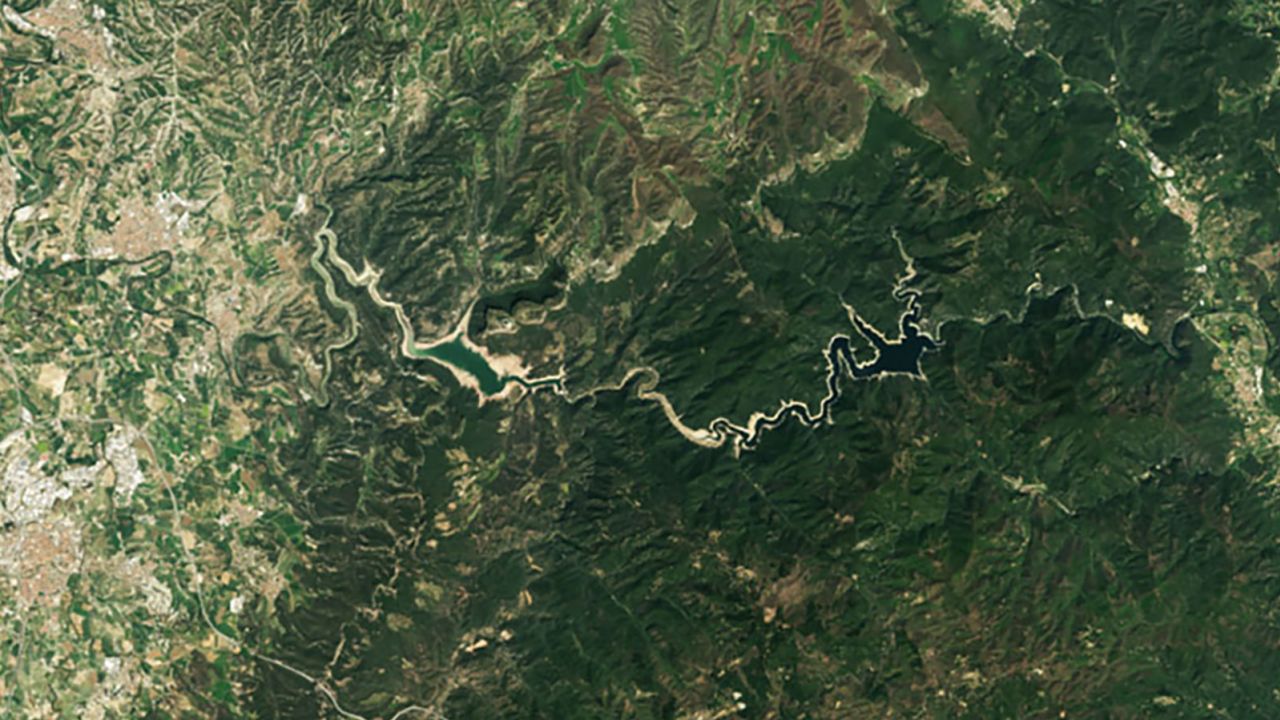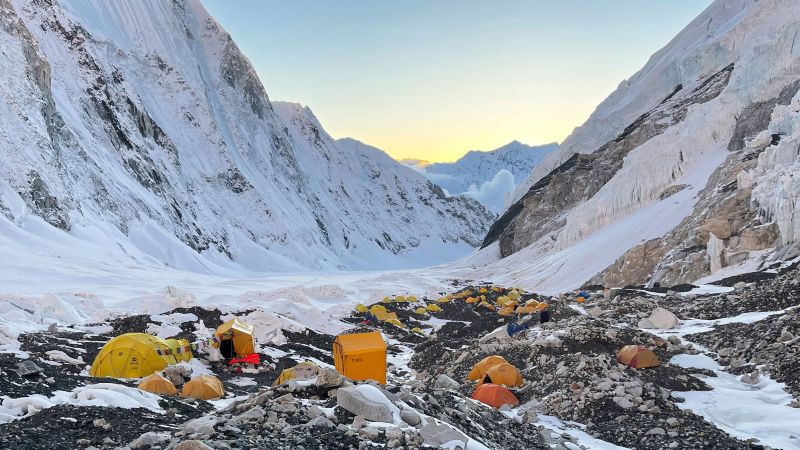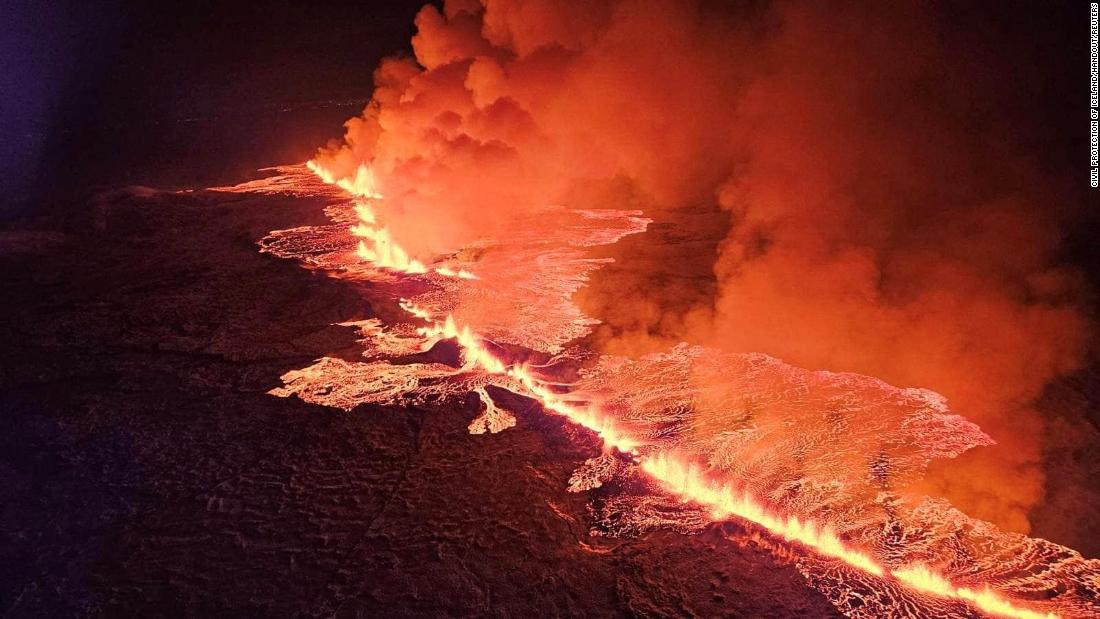Drought-stricken Spain is running dry, with disappearing lakes, dead crops and trucked-in water

Catalonia, Spain
CNN
—
Standing in his field of stunted, withered maize, Santi Caudevilla is very worried. “If the weather does not change it will be zero. Nothing is going to be harvested,” he said.
Caudevilla, who grows maize, sorghum and other crops in Gimenells in Catalonia, has been hit hard by the severe drought which has hammered this part of northeastern Spain.
Rainfall has been low for years. “We are in a desert. This is a desert today,” he said.
The lack of water is starting to feel like an existential crisis for farmers such as Caudevilla and he is worried about the future of his profession. It’s becoming increasingly hard to make ends meet as crops shrivel through lack of water – or cannot be planted at all.
Droughts are a fact of life in this corner of Spain. “They are typical of Catalonia’s Mediterranean climate,” said Albert Ruhi, a freshwater ecologist at the University of California, Berkeley, who is originally from Catalonia.
But a significant lack of rain and snow have made this one much, much drier, he told CNN.
“This is the worst period that we have had for the last 100 years,” Samuel Reyes, director of the Catalan Water Agency, told CNN.
The problem spreads beyond Catalonia.
Spain has been in a long-term drought since the end of 2022, said Ricardo Torrijo, a spokesperson for AEMET, the Spanish national weather service.
In March, the country only received 36% of the average monthly rainfall, making it the second driest March this century. The trend continued into April, which could end up being the driest on record, Torrijo told CNN.
Drought conditions have been exacerbated by searing temperatures that are more reminiscent of mid-July than spring.
Last Thursday, April records were smashed, with the city of Córdoba in southern Spain reaching 38.8 degrees Celsius (101.8 degrees Fahrenheit).
The combination of drought and heat have stoked fears for a repeat of last summer where the country saw blistering heat waves and wildfires that burned through 306,000 hectares (756,000 acres). Unusually early wildfires this spring have already burned more than 10,000 acres in the eastern region of Castellon.
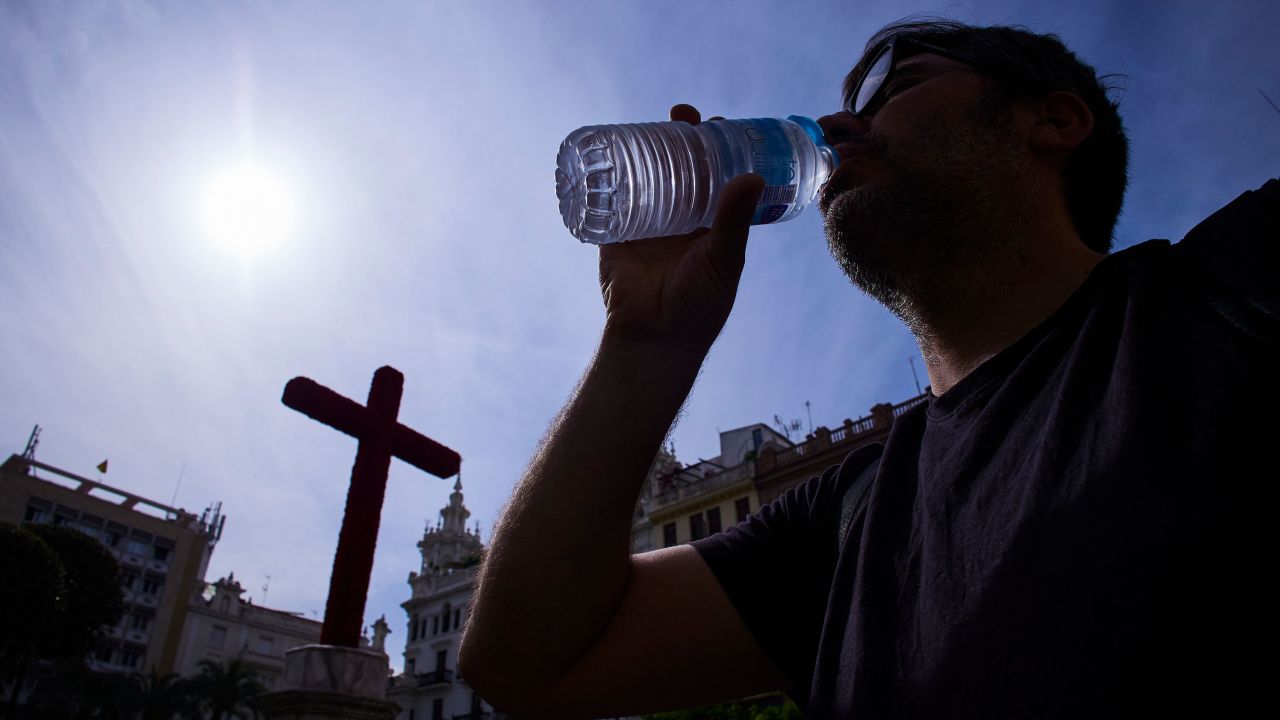
These conditions point to a new reality for parts of Europe, which is warming twice as fast as the global average. While it will take time to pin down the exact role climate change is playing, scientists are clear that human-caused global heating is making droughts and heat waves more common and more extreme.
The cracked, desiccated earth at the Sau Reservoir reveals the heavy toll the lack of rainfall has taken on Catalonia’s water sources.
Located about 60 miles north of Barcelona, the reservoir is a key drinking water source for the region, but in late April it was only at 7% of capacity.
Its water levels are so low that a medieval village, flooded when the lake was created in the 1960s, has emerged, lending an eerie presence to the sun-baked lakebed.
Authorities have been forced to siphon out water from the reservoir in an attempt to protect water quality and have had to remove native fish to stop them asphyxiating.
Reservoir levels across Catalonia are hovering at around 25%, substantially lower than usual for this time of year.
The lack of water is having a catastrophic impact on farms across the region. “There is no precedent,” said Martí Costal, head of water at the Young Farmers and Ranchers of Catalonia (JARC).
The majority of wheat and barley harvests on rainfed land will be lost, and on irrigated land will be cut by half, Costal told CNN. “If it does not rain in May it will be a disaster,” he said.
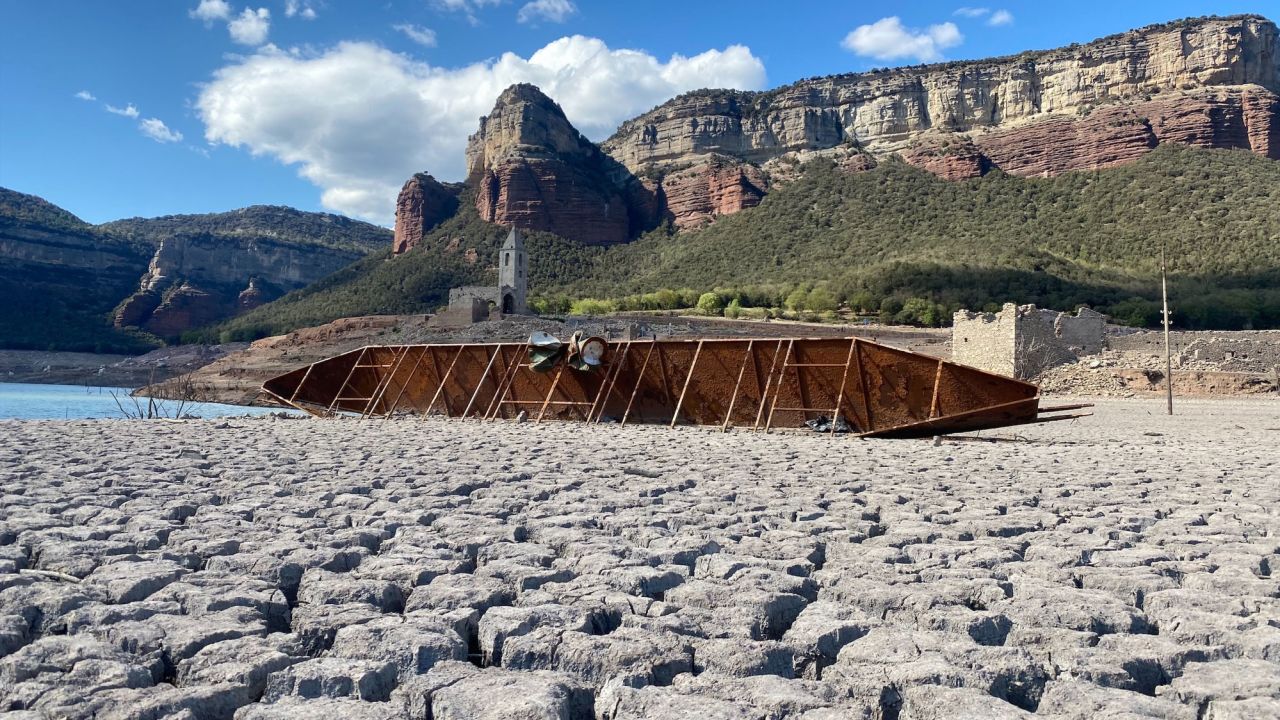
It’s a story which tracks across the country’s agricultural heartlands.
Drought affects 60% of Spain’s countryside, and has destroyed crops across 3.5 million hectares (8.6 million acres), according to the Coordinator of Farmers’ and Ranchers’ Organizations (COAG). That’s an area bigger than the state of Maryland.
Livestock farming is at risk as farmers need pasture to feed their animals. Without it, they are forced to buy food. Losses are also expected for orchards, vineyards, olive oil production and vegetable farming, Serge Zaka, an agrometeorologist, told CNN.
“These agro-climatic conditions are leading to an agricultural disaster,” he said.
A lack of vegetation is also preventing bees from making honey. Beekeepers are facing a third consecutive season without a harvest thanks to water shortages, according to COAG.
In April, Spain requested emergency funding from the European Union to help farmers cope with the impacts of the drought.
Water scarcity is not just affecting farmers, but also drinking water.
The village of Castellcir, around 30 miles north of Barcelona, is one of many in Catalonia that have been relying on water brought in on trucks.
People have been asked to save water by having quick showers, being careful when washing dishes and not filling their pools.
The situation has been going on for more than a year, said Juan Cogdony, a resident of the village. “We are very worried,” he told CNN.
It just won’t rain, Cogdony said, looking up at the sky. “There is no water. Beer, yes, but no water,” he joked.
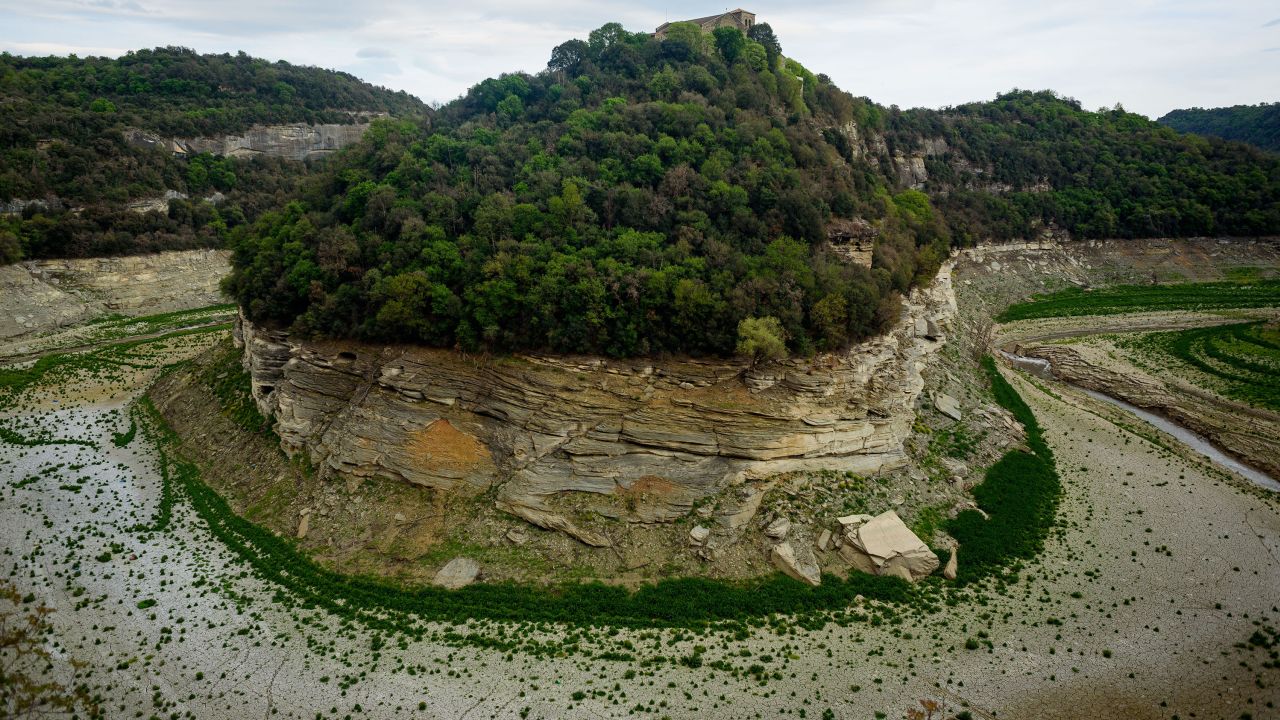
As the summer approaches, and the hope of heavy spring rains fade, many are sounding the alarm on what might be in store for Spain.
“We are now in a very dramatic situation,” said Joan Girona Gomis, a scientist at the Institute of Agrifood Research and Technology, a research organization owned by the Catalonian government.
Without significant rain “we will suffer a bad drought this summer,” he told CNN.
Gomis has been working on experiments to increase the efficiency of irrigation systems used by farmers, including by using technology such as sensors to evaluate the precise amount of water crops need.
Whether Catalonia can remain one of Europe’s key farming regions is “the big question,” Gomis said. It all depends on “if we are able to adapt.”
It will mean big changes, Costal said, including researching drought-resistant crops, investment in urban and agricultural infrastructure and improvements in water efficiency.
He hopes what’s happening in Spain and other parts of Europe will remind people where their food comes from. “The fruits are produced in the field, not on the shelves of a supermarket,” he said.
In Gimenells, Caudevilla is deeply worried about what will happen to the Catalonian countryside if, as expected, droughts and heat waves become more frequent and more intense.
“This area is facing abandonment,” he said. Farmers are aging, he added, “in 10 years nobody will want to work in this countryside.”


